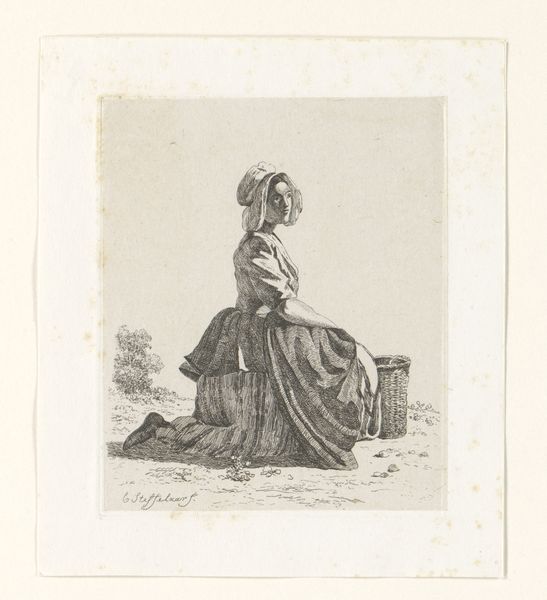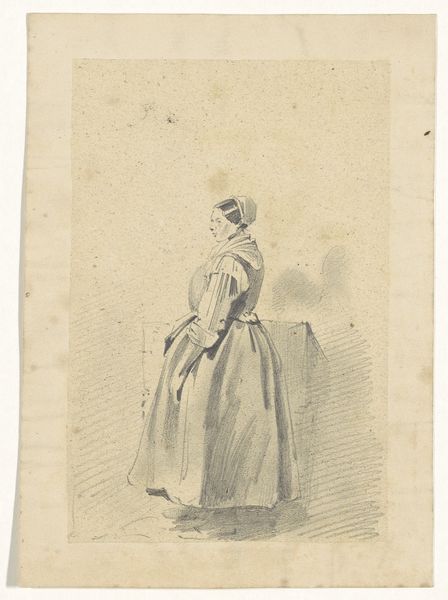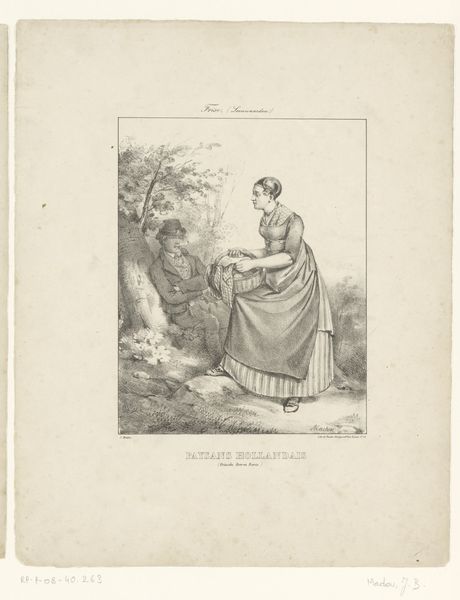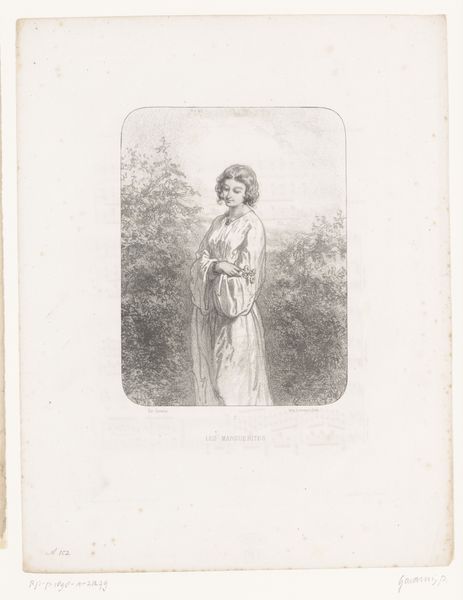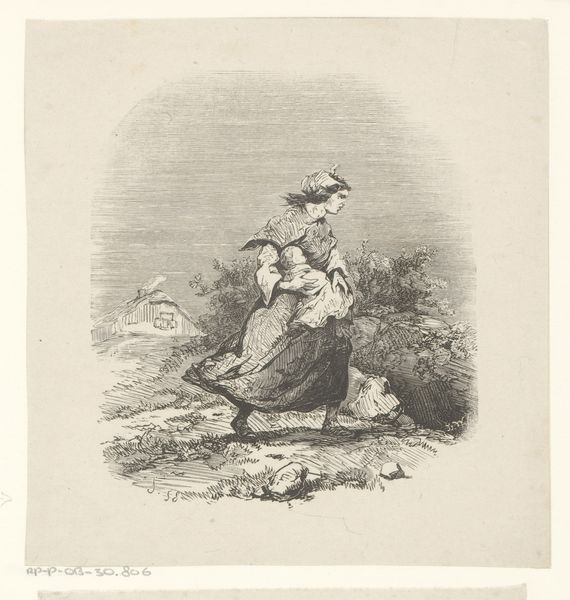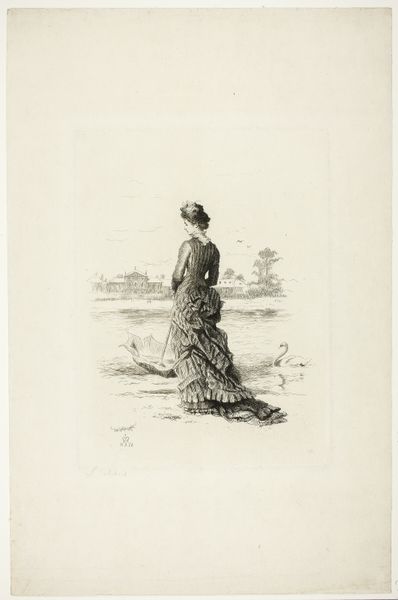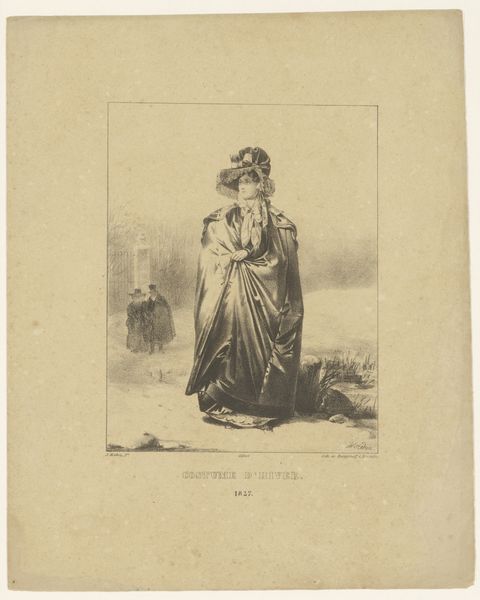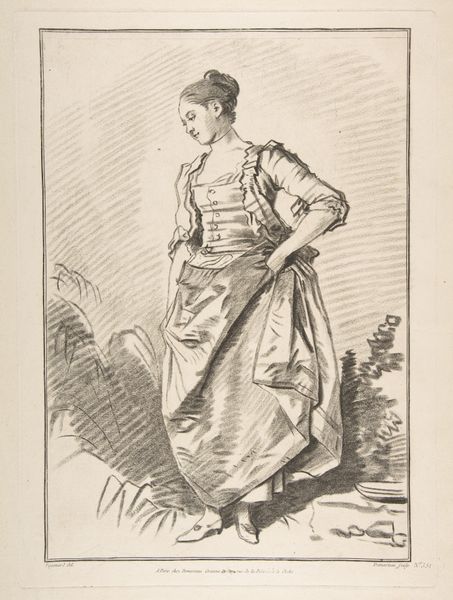
print, engraving
#
portrait
#
dutch-golden-age
# print
#
old engraving style
#
figuration
#
romanticism
#
line
#
genre-painting
#
engraving
#
realism
Dimensions: height 127 mm, width 94 mm
Copyright: Rijks Museum: Open Domain
Cornelis Steffelaar made this etching of a seated farmer's wife some time in the first half of the 19th century. It gives us a glimpse into the everyday lives of the rural working class in the Netherlands. Steffelaar's choice of subject is interesting. During this period, Dutch art often focused on landscapes or portraits of the wealthy. Here, Steffelaar directs our gaze to the countryside, depicting a woman who is part of the agricultural workforce. Her bare feet and simple clothing speak to the economic realities of the time. The details of her posture and gaze evoke a certain melancholic tone, perhaps hinting at the hardships of rural life. By focusing on the working class, Steffelaar's work challenges the norms of art institutions. This image serves as a valuable document and artistic expression, reminding us to question the politics of imagery and the social conditions that shape artistic production. To fully appreciate this etching, we need to delve into the economic history of the Netherlands, examining how the agricultural sector influenced social structures.
Comments
No comments
Be the first to comment and join the conversation on the ultimate creative platform.
